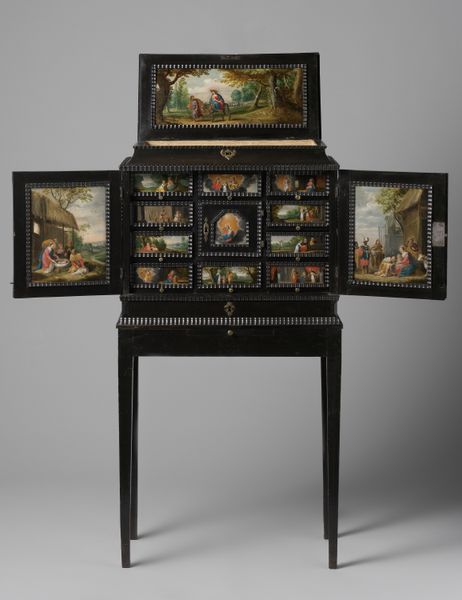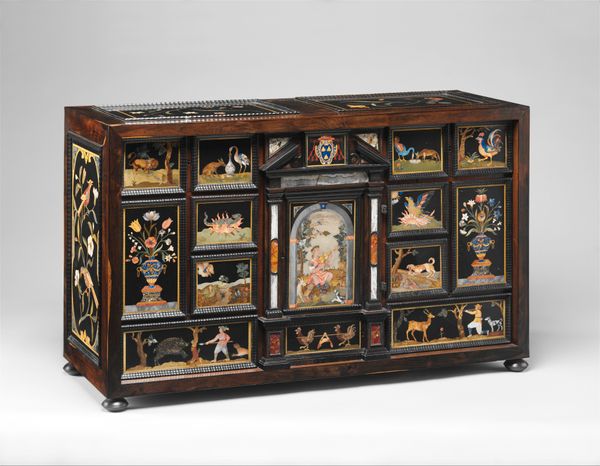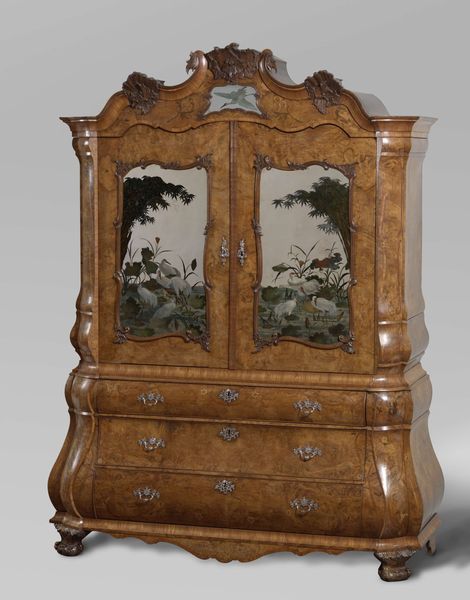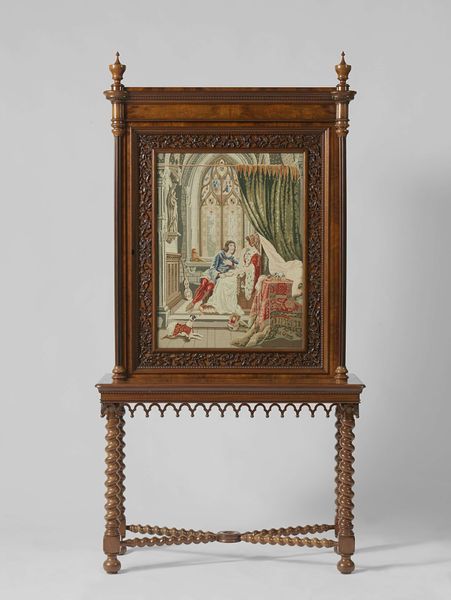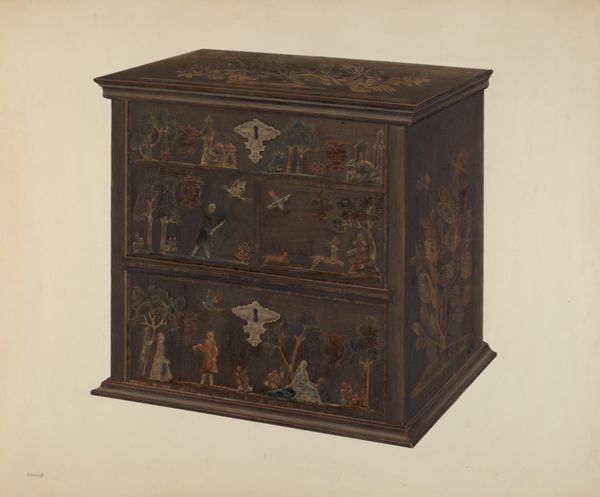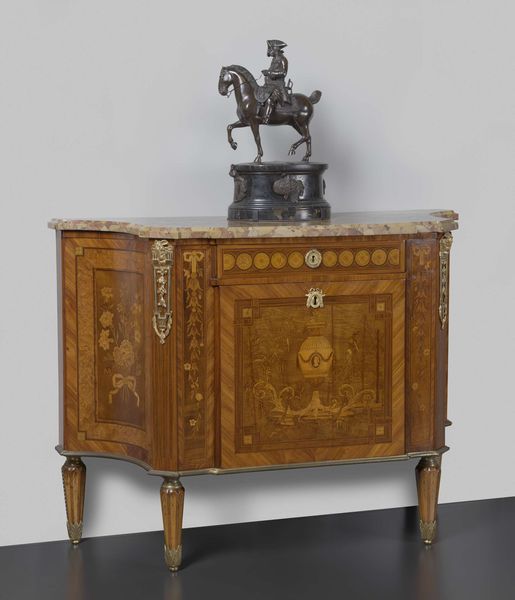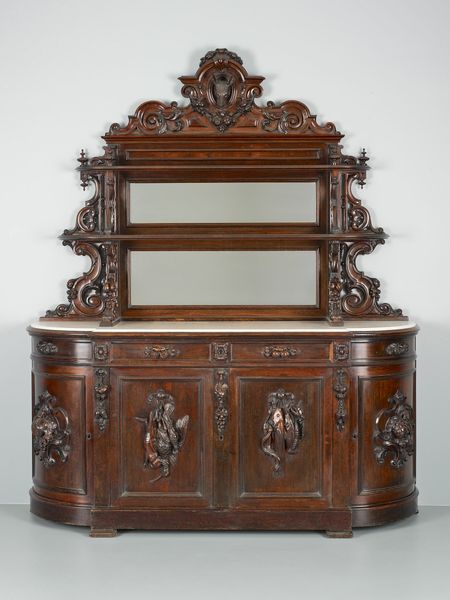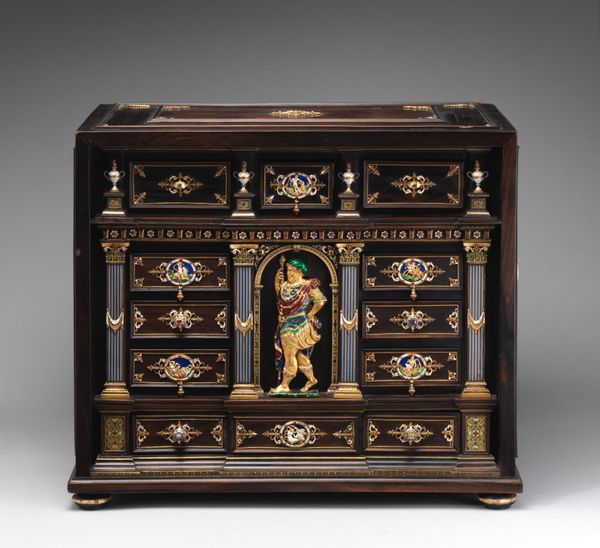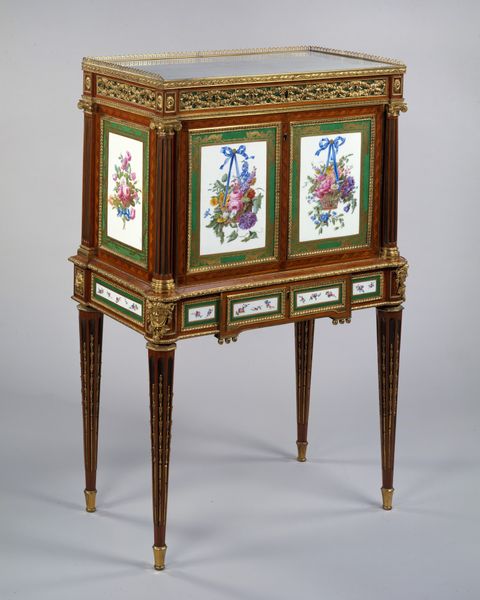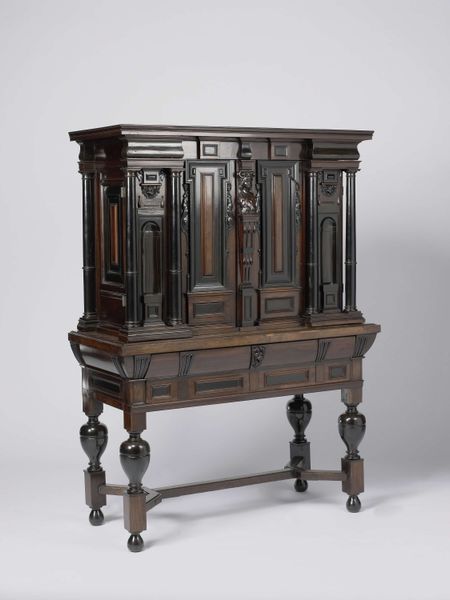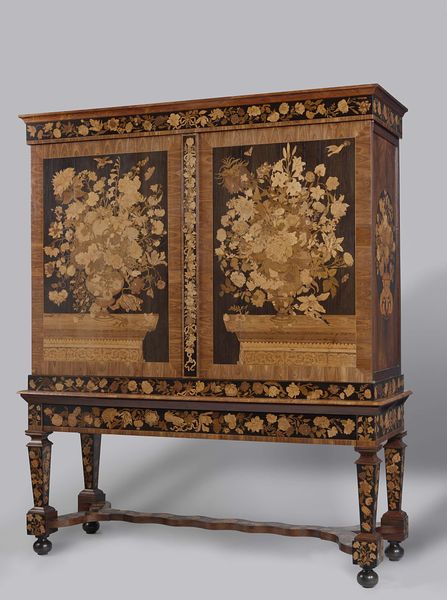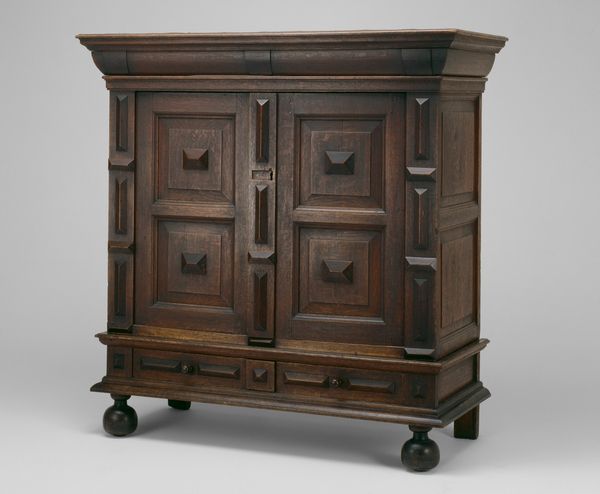
Cabinet Decorated with Episodes from the Parable of the Prodigal Son c. 1640
0:00
0:00
painting, oil-paint, wood
#
narrative-art
#
baroque
#
painting
#
oil-paint
#
furniture
#
wood
#
genre-painting
Dimensions: overall height 175 cm, overall width 145 cm, overall depth 50 cm, lid height 18 cm, lid width 52.3 cm, outer door height 41 cm, outer door width 29.7 cm, drawers left height 4 cm, drawers left width 22 cm, drawers right height 4 cm, drawers right width 22 cm, central door height 18.4 cm, central door width 10 cm, drawer bottom centre height 6.5 cm, drawer bottom centre width 14.4 cm, drawer bottom height 4 cm, drawer bottom width 21.9 cm
Copyright: Rijks Museum: Open Domain
Curator: This remarkable cabinet, made around 1640 by Frans Francken the Younger, showcases scenes from the Parable of the Prodigal Son across multiple oil-on-wood panels integrated into its structure. Editor: What strikes me immediately is its almost theatrical presentation. It feels like a miniature stage set, inviting contemplation on the prodigal son’s journey. The somber palette and ornate detailing certainly suggest affluence. Curator: Exactly. The cabinet itself, its materials and construction, speaks to a wealthy patron. The choice of such a familiar, morally instructive narrative for this type of domestic furnishing indicates that art wasn't simply about aesthetics; it was also embedded within a culture deeply concerned with moral guidance and religious lessons. Editor: I see what you mean. Embedding didactic scenes within functional objects offers an interesting insight into how religion played out in the quotidian experience. These images weren't just on display in a church. It's a constant reminder within a home, reflecting prevailing social ideologies of redemption, repentance, and the structure of patriarchy within familial governance. Curator: It also prompts me to consider the craftsmanship that goes into an object like this. We’re not just looking at painting; the wood carving and construction required a high level of skill. And who would have been employed? Was the joiner the same artist who completed the oils? It reminds us of a system of craft, division of labor, and localized economies that we often forget when considering singular authorship. Editor: That’s an important observation. These Parable of the Prodigal Son vignettes, though, are not just pretty pictures for decorative purposes, they functioned within an economic system steeped in patriarchal power dynamics, demanding obedience while also extending the promise of forgiveness, but only under certain cultural conditions. Curator: Perhaps we shouldn’t simply view this piece as static. Considering it this way creates the possibility for more varied insight to its period and function. The objecthood provides much insight on its own. Editor: Absolutely. Thinking through social and material implications gives us a better grasp on art's multifaceted role.
Comments
No comments
Be the first to comment and join the conversation on the ultimate creative platform.
